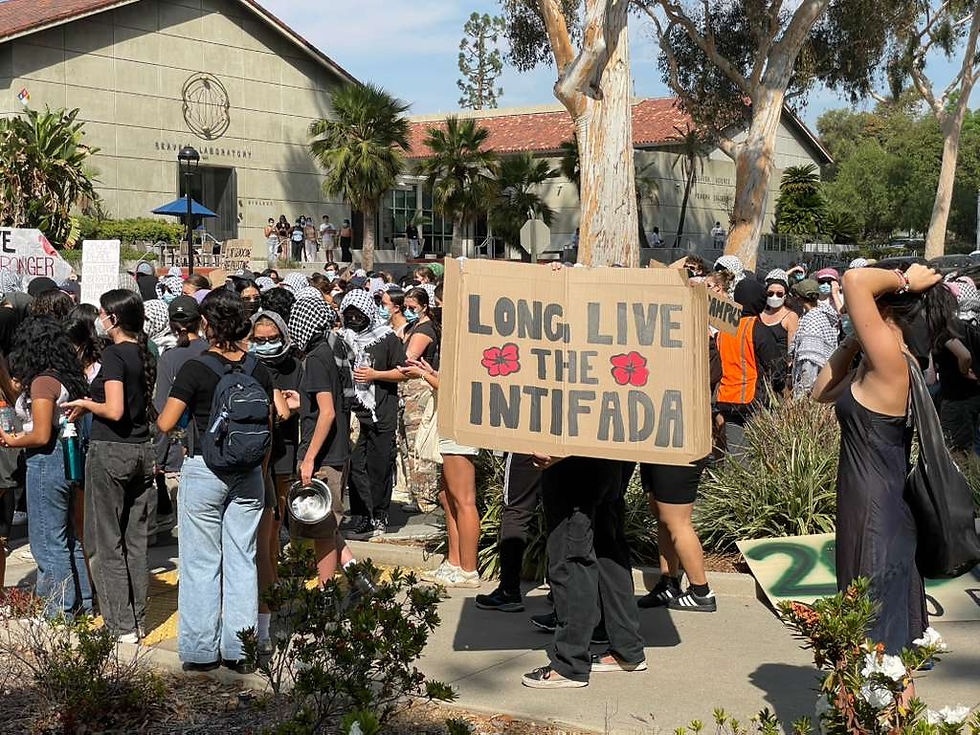Trouble for Trump
- The Claremont Independent

- Oct 23, 2016
- 3 min read
With 15 days to go, Hillary Clinton has cemented her position as the overwhelming favorite to win the election on November 8th.
Nationally, Mrs. Clinton has amassed a 6-point lead, according to this morning’s RealClearPolitics average. In live voter surveys, which have been more accurate in past elections than online polls, the Democratic nominee leads Donald J. Trump by an average of about 10 points. Online and IVR1 polls show a tighter race, with Mrs. Clinton maintaining a 3-point advantage among those surveys.
After the first presidential debate, Donald Trump lost traction in the most competitive states and has failed to recover. He now is underperforming 2012 Republican presidential nominee Mitt Romney in nearly every battleground state, and his path through the Rust Belt—long thought to be his best shot at victory—has closed.
Mr. Trump is doing well in Ohio and Iowa, states where he holds a decisive demographic advantage. But in all-important Florida, where President Obama defeated Republican Mitt Romney by only 0.9 percent in 2012, Mr. Trump lags by four points. He also is behind in North Carolina, where Republicans won in 2012.
2016 Polls vs. 2012 FinalState2012 Final Vote2016 RCP Average% Change from 2012Florida+0.9 Obama+3.8 Clinton+2.9 DNorth Carolina+2.0 Romney+2.5 Clinton+4.5 DNevada+6.7 Obama+4.2 Clinton+2.5 RColorado+5.4 Obama+7.2 Clinton+1.8 DVirginia+3.9 Obama+8.0 Clinton+4.1 DArizona+9.1 Romney+1.3 Clinton+10.4 DPennsylvania+5.4 Obama+6.2 Clinton+0.8 DMichigan+9.5 Obama+10.0 Clinton+0.5 DOhio+3.0 Obama+0.6 Trump+3.6 RIowa+5.8 Obama+3.7 Trump+9.5 RNew Hampshire+5.6 Obama+8.0 Clinton+2.4 DWisconsin +6.9 Obama +7.0 Clinton+0.1 D
There are other warning signs for Mr. Trump. Though his path to the White House is through the Rust Belt, he is losing badly there. He has not led or tied a single poll taken in Wisconsin since mid-September, and in Michigan, he is down by about nine points. Even in these states, favorable demographics have not helped the G.O.P.’s chances, with Mrs. Clinton showing gains across the northeast relative to President Obama’s finish there in 2012.
Mr. Trump also is fending off challenges in unlikely places. In Arizona, a state which Mitt Romney won by nine points, he and Mrs. Clinton are effectively tied. But even if Mr. Trump manages to avert disaster there, he might lose deep-red Utah to anti-Trump hometown hero Evan McMullin, who rocketed to a four-point lead in a four-way poll conducted last week. FiveThirtyEight’s now-cast, a statistical model that predicts who would win if the election were held today, gives Mr. McMullin a shocking one-in-four shot of taking Utah—and becoming the first third-party candidate to win an electoral vote since 1968.
No candidate has ever emerged from such a weak polling position in so little time. With no more debates on the calendar, Mr. Trump is out of opportunities to change the media narrative to his advantage, and few undecided voters remain to be convinced by either candidate. Barring a polling error of unprecedented proportions, Hillary Clinton will become our nation’s next president.
In this election cycle, however, stranger things have happened. It is possible that pollsters have underestimated the turnout Mr. Trump will generate among his base of blue-collar whites, thereby unintentionally skewing the results of their surveys in Mrs. Clinton’s favor. Voters also dislike both candidates more than they have any other presidential contenders in the history of modern polling, making it hard to predict exactly which groups of voters will turn out on November 8th and which will stay home out of frustration. Others, including the Trump campaign itself, have cited “shy Trump voters”—individuals who are unwilling to disclose to pollsters that they support his candidacy when in fact they do—as a possible justification for the Republican nominee’s poor polling position.
But even accounting for these possibilities, Mr. Trump is still the underdog in this race, and a victory—if possible at all—would be extremely narrow. The electoral map is unfriendly, the polls are even worse, and the Trump campaign lacks a substantial get-out-the-vote effort in nearly every contestable state.
Donald Trump is in deep trouble.
Photo: Evan Vucci/AP
Featured Image: Gage Skidmore (flickr)
Footnotes
Interactive Voice Response polls, otherwise known as robocalls. ↩
.png)



Comments